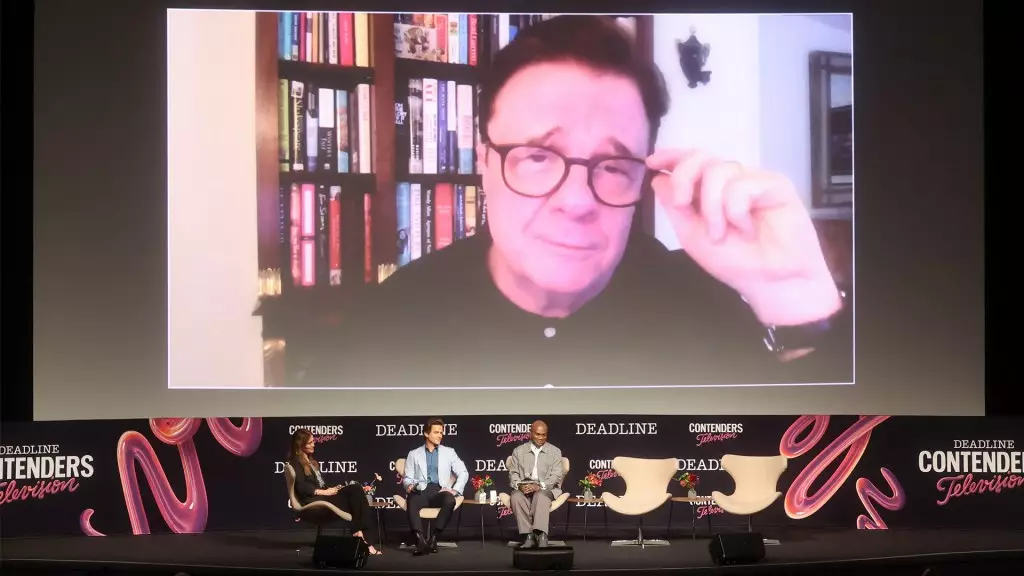As the landscape of contemporary society grapples with increasingly polarizing political climates and rising intolerance, it becomes crucial to highlight cultural narratives that resonate with marginalized communities. The recently launched Hulu sitcom “Mid-Century Modern” stands out as a beacon of positivity, providing a refreshing take on gay identity through humor and heartfelt storytelling. With its cast led by Nathan Lane, Matt Bomer, and Nathan Lee Graham, the show not only entertains but also serves a vital role in promoting LGBTQ+ visibility and joy in a tumultuous world.
Amidst discussions of social justice, the show embodies resilience and the necessity of humor, particularly in its celebration of queer relationships. As Lane articulately noted during the show’s promotion, the series arrives at a time when LGBTQ+ rights are critically endangered. The trio of leading actors emphasizes how essential it is to present unapologetic, authentic portrayals of gay characters, fostering a sense of belonging and hope for audiences who may feel marginalized or targeted in today’s political discourse.
The Power of Representation
“Mid-Century Modern” delves into the lives of three older gay men—Bunny, Jerry, and Arthur—who seek solace and companionship after a significant loss. Their decision to cohabit in Palm Springs creates a vibrant tapestry reflecting their diverse personalities and experiences. This multilayered narrative emphasizes that comedy, even when addressing challenging subjects, acts as a transformative tool that fosters empathy and understanding.
In celebrating queerness, the show holds up a mirror to society, addressing the complexities of relationships and the importance of friendship as a means of survival. Bomer’s assertion that the show provides a “little queer joy” reveals its power to uplift the LGBTQ+ community, while Graham’s comments regarding the liberation of portraying characters without shame underscore the significance of self-acceptance in personal and societal contexts. These narratives affirm that joy can coexist with pain, highlighting the nuanced experiences of LGBTQ+ individuals.
A Heartfelt Farewell and Lasting Legacy
The passing of Linda Lavin, who portrayed Bunny’s mother Sybil, adds a poignant layer to the series’ narrative. Her untimely death not only shocked the cast and crew but also allowed the creators to craft a meaningful tribute within the storyline. The ninth episode, “Here’s to You, Mrs. Schneiderman,” poignantly addresses themes of grief and remembrance, allowing for personal reflection amidst the comedy. Such moments permeate the series with emotional depth that resonates with viewers on multiple levels.
In offering this unique blend of humor and heartache, “Mid-Century Modern” challenges traditional sitcom norms, demonstrating that laughter can arise from painful experiences. This delicate balancing act exemplifies the show’s commitment to authenticity, enhancing its emotional weight and relatability.
Live Audiences and Authentic Laughter
A fascinating aspect of “Mid-Century Modern” is its format, which was filmed in front of a live studio audience. In an era increasingly dominated by pre-recorded laugh tracks, the decision to incorporate real laughter adds an exhilarating layer of authenticity to the viewing experience. Graham’s playful assertion against detractors highlights a commitment to genuine moments of joy, creating a connection not only between the audience and the actors but also among the characters themselves.
This innovative approach creates an inviting atmosphere, saturating the episodes with warmth and sincerity. The collective experience of laughter—both on-screen and off—deepens the show’s exploration of connection, community, and what it means to share a life with others, especially within the LGBTQ+ context.
A Celebration of Found Family
Ultimately, “Mid-Century Modern” thrives on the concept of “found family.” The dynamics among Bunny, Jerry, Arthur, and Sybil represent the diverse spectrum of LGBTQ+ relationships and the important roles they play in fostering support in times of adversity. This central theme not only offers comedic relief but also resonates on a profound human level, inviting audiences to reflect on their own relationships and experiences.
In crafting this narrative, the creators have skillfully harnessed the power of storytelling to illuminate shared struggles and triumphs. The result is a vibrant series that not only entertains but also inspires broader conversations about acceptance and the affirmation of diverse identities in an increasingly complex world. By embracing the humor and heart inherent in gay experiences, “Mid-Century Modern” boldly asserts that joy is not merely an escape but a crucial aspect of the human experience, especially in times of struggle and uncertainty.
